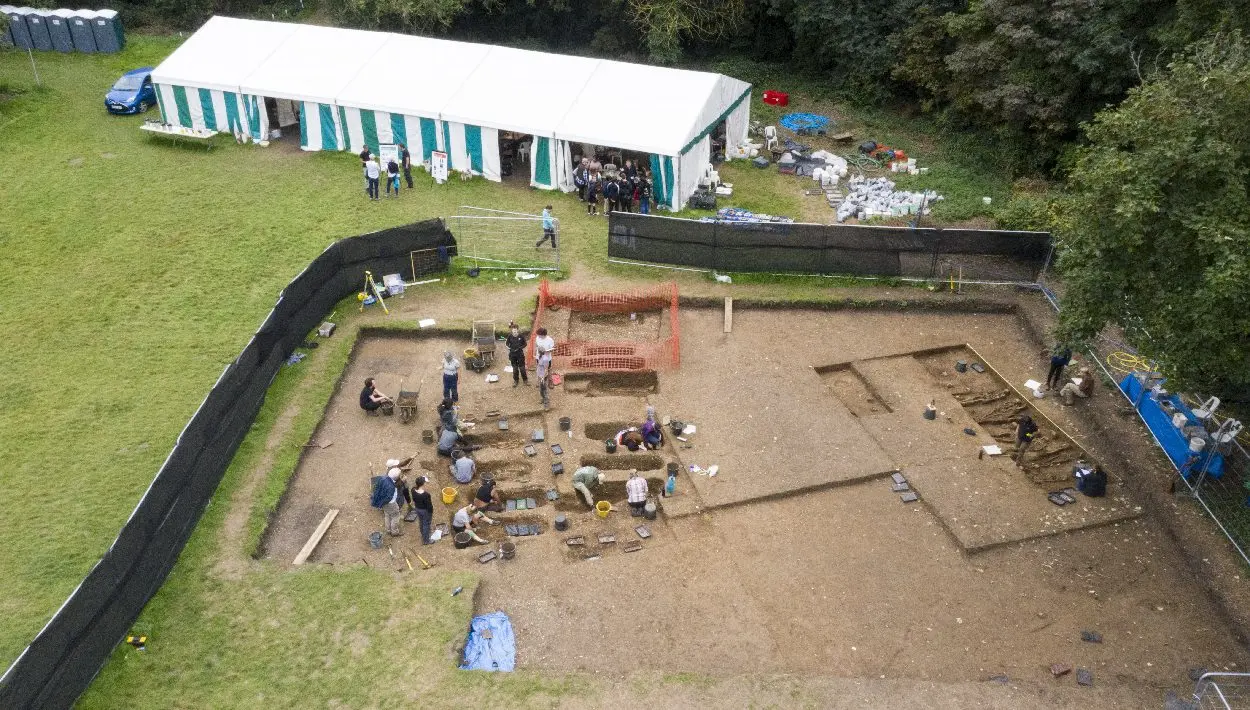Archaeologists from the University of Reading have been conducting excavations at Cookham Abbey, located adjacent to the Holy Trinity Church in Cookham, England.
Excavations have revealed a large timber structure, one of the main buildings within an Anglo-Saxon monastery known as Cookham Abbey.
According to the researchers, the timber structure functioned as a social and religious centre, giving new insights into monastic life at Cookham.
The team have also uncovered a preserved timber barrel-lined shaft containing wooden artefacts, a walled monastic enclosure fronting the River Thames, and a cemetery with over 50 burials spanning three generations.
The monastery was first discovered in 2021, with archaeologists dating the site to the reign of Cynethryth, a Queen of Mercia during the 8th century AD. Cynethryth joined a religious order and became royal abbess of the monastery after the death of her husband, King Offa, in AD 796.
Professor Gabor Thomas, from the University of Reading, said: “The discoveries we have made at Cookham will help us paint a much clearer picture of daily life at the monastery. We will need to carry out a more detailed analysis of what we have found, but the artefacts unearthed at this year’s dig again show the exceptional quality of preservation at Cookham.”
Previous excavations have identified the layout of the wider complex, which was organised into a series of functional zones demarcated by ditched boundaries. One of these zones appears to have been used for housing and another for industrial activity, indicated by a cluster of hearths probably used for metalworking.
Header Image Credit : University of Reading







